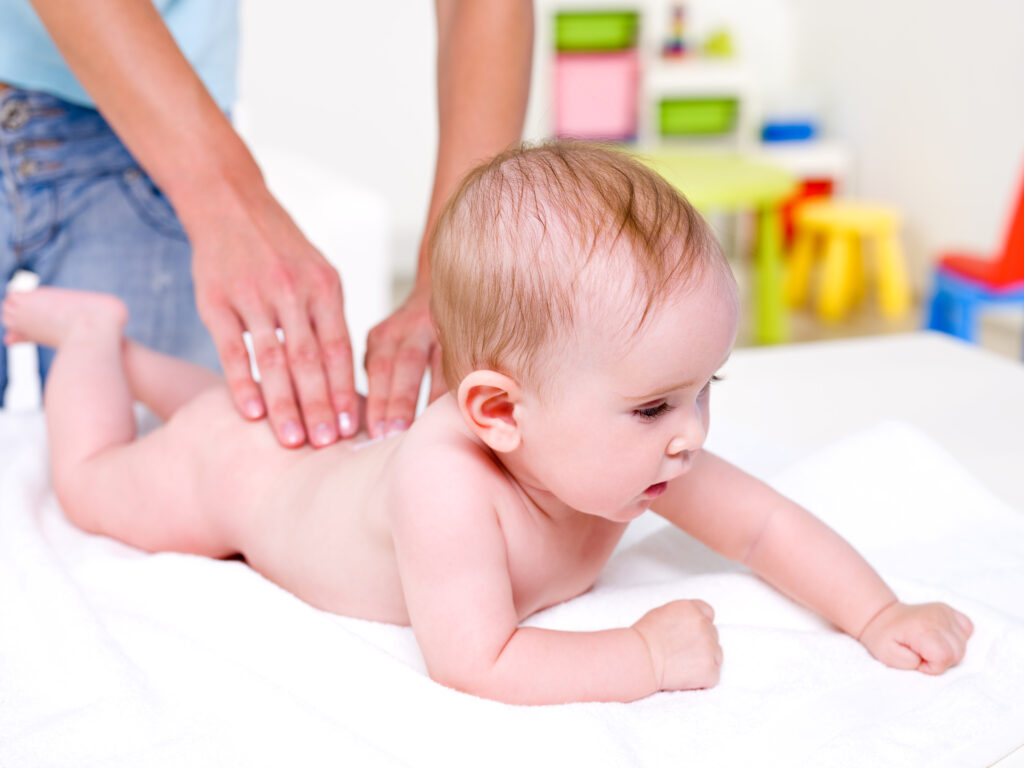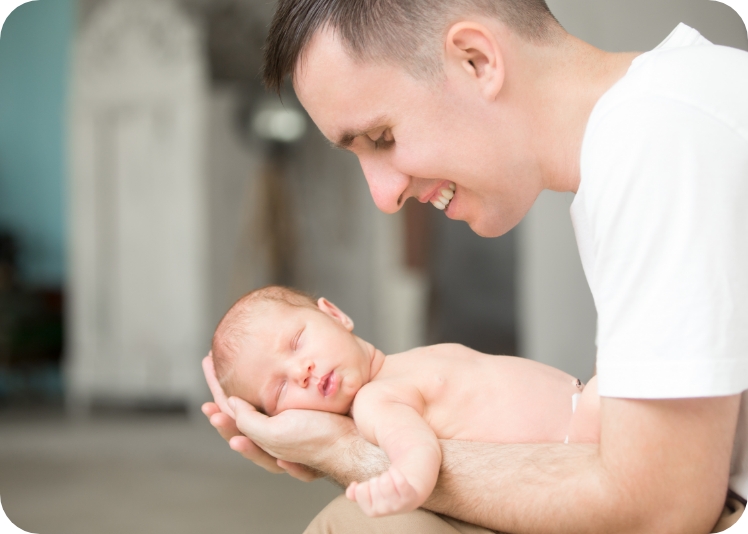One way to ensure that your baby bonds well with you, gets a regular dose of nourishment, and stays calm and happy is through massages.
Massages come with a ton of physical, mental and emotional health benefits. With each delicate touch, your baby feels cherished and loved.
But before you grab the baby oil and start rubbing away, let’s go over a few things. Read on to know all about infant massage, how you should begin, the spectacular benefits and expert tips we’ve curated for you.
How massage helps in bonding with your baby
An excellent approach to connect with your little one, massages build trust between you and your baby. The act of massaging can release oxytocin, a hormone associated with bonding and affection. Additionally, massages can also help make your baby feel at ease, improve their sleep, and alleviate colic or constipation.
Massaging is a great way for parents to learn about their baby’s cues and communicate with them non-verbally, which can help to establish a strong emotional connection between parent and child. Babies are known to love their parents’ touch.
What are the benefits of baby massage
According to the International Association of Infant Massage (IAIM), daily child massage offers interaction, stimulation, relief, and relaxation. These advantages influence your baby, family, and eventually society too! Baby massage has several advantages including:
- Interaction: Parent-child massage fosters bonding, love, and trust. Early parent-child interaction helps foster empathy and confidence in babies.
- Stimulation: Massages stimulate all bodily systems — digestive, hormonal, immunological, and circulatory — and muscles and joints. The baby’s awareness if their own body may enhance coordination and balance.
- Relief: Massage can assist parents in dealing with colic, constipation, teething, and growing pains.
- Relaxation: Massages reduce stress hormones and boosts “feel-good” hormones, improving sleep for newborns and parents.
Â
The International Association of Infant Massage (IAIM) says that massaging babies may help with digestion and circulation. This may benefit newborns with issues like:
- Constipation
- ColicÂ
- CrampsÂ
- Gas
- Muscular strain
- Teething
- Growth pains
Massages may also accelerate preterm babies’ growth. However, if your baby has health difficulties or is ill, check with their doctor before massaging.
When is the right time to start baby massage
The IAIM recommends parents expose babies to some form of touch from birth.
Many parents prefer to do so by placing their newborn skin to skin on their chest. While holding your baby, you may start by slowly stroking their legs, arms, and back.Â
Start massaging your newborn after a few weeks. Follow your baby’s emotions. You should massage a calm, active, and content baby. Avoid massages that make your baby uncomfortable.
Pediatricians say that you shouldn’t massage a baby whose arms or back are stiff. They also say to wait 45 minutes after feeding your baby because it could make them throw up.
How to give your baby infant massage
Here is how you should give a soothing massage to your little bundle of joy.
- Feet: With one hand on your baby’s heel, start at the top of the thigh and slowly stroke down to the ankle, gently squeezing the leg as if you were milking a cow. Go ankle-to-thigh. Thumb-rub the feet to uncurl and stroke the toes. These strokes work on arms and hands as well.
- Head: Start with your hands on both sides of your baby’s head, then go down their body from head to toe. Draw little circles on your baby’s head.
- Face: Fold your hands on your baby’s forehead and softly push outward. Next, stroke your thumb from one cheek to the other over the top lip to make your baby grin. Repeat on the lower lip.
- Chest: Fold your hands on your baby’s chest and press out to the sides like you’re smoothing an open book.
- Tummy: Draw an ellipse underneath your baby’s belly button with your fingers. (Scroll clockwise to follow digestion.) Next, “walk” your fingertips diagonally over your baby’s belly, making an “X.”
- Back: Stroke their back horizontally and vertically.
What are the best baby massage oils
Oil can make infant massage smoother for parents and more calming for newborns, but the ideal oil for baby massage is still a mystery!
The NHS advises against using oils or lotions on newborns. A newborn’s skin is delicate and easily harmed. In the first month (or longer in preterm newborns), a baby’s skin grows and forms a natural barrier and this is when you can use any of the following oils for infant massage:
- Cold-pressed oil contains fewer contaminants than cooking oils and is preferred by some parents.
- Mineral oils or petroleum-based ointments can be used to treat dermatitis and eczema in babies with dry or damaged skin.
- Polyunsaturated vegetable oils and coconut oil are great for infant massage.
Baby massage tips
- Do baby massages every day so they get used to it.
- In general, you want to choose a time when you’re not rushed (so don’t try to squeeze in a session while dinner’s cooking or you’ve got the washer and dryer going) or when your baby is hungry (since they won’t enjoy the belly rubs if their belly is empty) or too full (they will likely spit up the supper — you won’t make that mistake twice!)
- Use edible, odorless, cold-pressed fruit or vegetable massage oil. You don’t need oil to rub your baby, but it’ll be more comfortable for both of you.
- Coconut oil is easily absorbed into infant skin and digested when sucked on. Baby and mineral oils clog pores, so use a dab. Due to sensitivities, avoid nut oils.
- Choose a place you both like. To keep your practically naked infant warm during your massage, the environment should be at least 75 degrees F.
- You can massage your baby on the changing table, your bed (use a towel to minimize oil stains on your bedspread), or the rug (use a towel there too). Talk and sing to your infant or play calming music.
- Follow the baby’s lead. Your infant may not enjoy massages always. If they look away, frown, or cry when you touch them, postpone the session. Don’t always offer them a full-body massage.
- Be gentle, too much pressure can overwhelm your little one. Another good tip for massaging an infant is to stroke away from the heart, like from the shoulder to the wrist. This is calming and great for massages before naps or bedtime.
- Stroking toward the heart (from the wrist to the shoulder) stimulates and is best for awake and active babies.
- Make the baby massage more interactive by singing to your baby or by talking to them. Tell them about the day, the weather, about what you are doing and how you feel for them. This will help them learn communication skills and express themselves confidently later in life!
In conclusion
There are no set rules when it comes to massaging your baby. Give yourself and your baby some time to get adjusted to this new routine and watch your bond deepen in no time!
Do you give your baby infant massages? Which oil do you use for a baby massage? When do you prefer giving your baby a massage?
Download the BabyVerse app to get answers to all your child care questions!








